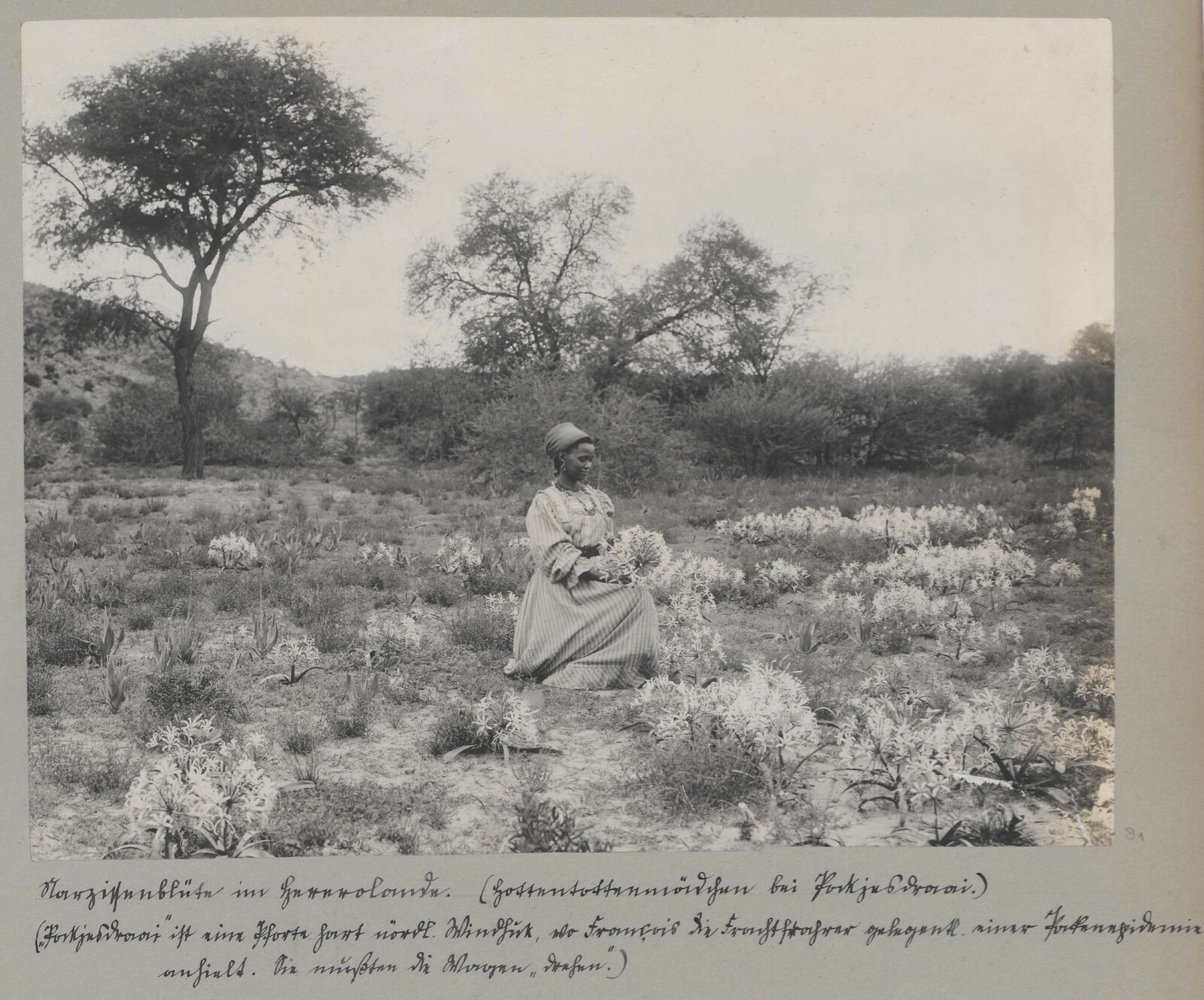Sequence 2: Entangled Internationalism
June 19–August 25, 2024
How can we understand the concept of solidarity between the German Democratic Republic (GDR) with the Namibian independence movement in relation to coming to terms with a genocidal past today? What are the material conditions for confronting German colonialism in present-day Namibia through a critical memory of internationalism in a museum context in East Germany? What impact does such a context have for reflecting upon the restitution of museum objects, the coloniality of photography, and the institutional denialism of injustice through leveraging legacies of socialist friendship? What would an inverse restitution of materials made in Germany found in today’s Namibia look like? What can art-research contribute to creating an open space for thought in process?
The exhibition The Year 1983 is Sequence 2 of the case-based exhibition series Entangled Internationalisms by the cross-collections Research Department of the Staatliche Kunstsammlungen Dresden at the Albertinum. In 1983, the hundredth anniversary of Karl Marx’s death and the five-hundredth anniversary of Martin Luther’s birth coincided. It constitutes a high point in the making of the political and humanistic self-image of the GDR. At the same time, socialist solidarity was closely related to the liberation movement of the South-West African People’s Organisation (SWAPO) in present-day Namibia. For the researcher Zoé Samudzi, curator of the exhibition, the year 1983 operates as a conceptual portal to enter a sedimentation of these different historical moments as a curatorial condition. Together, these moments compose a lens to focus on the particular geopolitical interdependencies that also go hand in hand with the fetishization and violence of solidarity, drawing a link to German colonialism and current debates on restitution. In a new work, the Angolan-born Namibian artist Tuli Mekondjo explores motherhood, indigenous heritage, and militarization in relation to the GDR’s support of SWAPO in the early 1980s. Researchers Ashkan Cheheltan and Tobechukwu Onwukeme from the Berlin-based research collective Forensis focus on the beginnings of Germany’s relationship with Namibia in the late 19th century when Namibia was declared a German colony. They present new research findings in the form of a digital architectural reconstruction of one of the most notorious historical sites of German colonial violence: Shark Island in Namibia. Forensis (and their sister agency Forensic Architecture) worked with the Nama Traditional Leaders Association (NTLA) and the Ovaherero Traditional Authority (OTA) to reconstruct the Shark Island concentration camp, and events within it, through a research process that combines advanced digital modeling and oral histories communicating the “situated knowledge” inherited by descendants of the survivors of the genocide perpetrated by German colonial forces against the Nama and Ovaherero people. Following this framework, The Year 1983 also exhibits holdings of the State Ethnographic Collections in Leipzig and Dresden, and the Albertinum.
On August 22–23, 2024, a public program comprising a conference, workshop, and performative audio walk will take place at Albertinum, Japanisches Palais, and the city of Dresden. Entitled “On Broken Connections between 1904, 1983, 1990, and Today,” the project is conceived by Frederike Moormann, Angelika Waniek, and Dieter Daniels in dialogue with Larissa Förster, Tuli Mekondjo, and Ina Maria Shikongo, a.o. It engages with wireless connections, guerrilla radio, and future telecommunication technologies, and aims to establish connections between Namibia and Germany (GDR and FRG) on a fractured timeline covering 1904, 1983, 1990, and the present day. How was radio involved in acts of violence and the liberation struggles between Germany and Namibia? What does today’s satellite technology have to do with this? How are our bodies part of telecommunication infrastructure? And how can history haunt us through new connections?
Image: “Landscape photography is an expression of imperial domination over space; the young native woman in her dress, bouquet in hand, is simply another beautiful thing to be claimed along with her land,” writes Zoé Samudzi in response to an image and original caption from the photograph album by German general Georg Maercker who led the Imperial Schutztruppe for German South West Africa between 1904–07: “Daffodil blossom in Herero country. [Hottentot girl at Porkjusdraai] [“Pokjusbraai” is a gate hard north of Windhoek, where Francois stopped the freight carriers on the occasion of a smallpox epidemic. They had to “turn” the goods.]” Courtesy State Ethnographic Collections in Dresden and Leipzig.
Sequences: Entangled Internationalisms is the curatorial and artistic research component of the international project Decolonizing Socialism: Entangled Internationalism (2019–2024), under the direction of Doreen Mende, at HEAD Genève of the HES-SO, funded by the Swiss National Science Foundation, in partnership with the Research Department of the Staatliche Kunstsammlungen Dresden. Spector Books will publish a printed and digital research edition for each “sequence.”
The production and the accompanying program were funded by the Federal Government Commissioner for Culture and the Media as part of the project “Museums as Active Places of Democracy” (MODemo).



